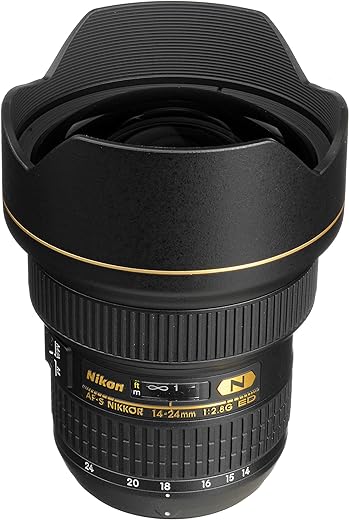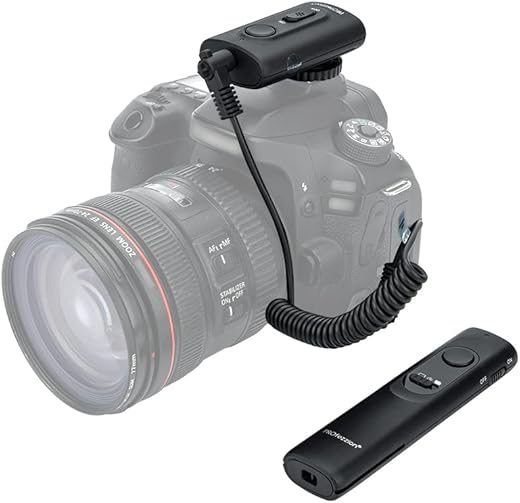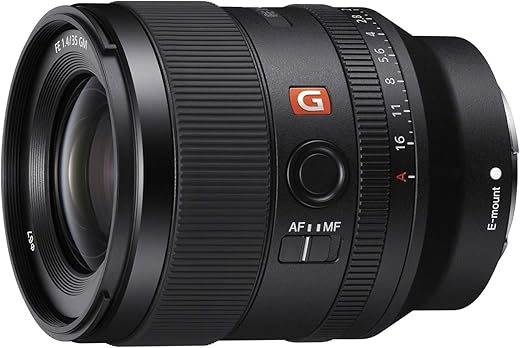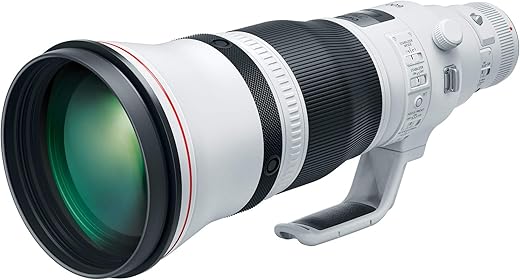Looking for top-notch image quality and versatility in your photography gear? Dive into my in-depth review of the Nikon AF-S NIKKOR 14-24mm f/2.8G ED lens. Explore its wide focal length range, impressive minimum focus distance, and superb lens construction featuring 2 ED glass elements. Let’s uncover what makes this lens a game-changer for your creative vision!
Nikon 14-24mm f/2.8G ED Lens
The Nikon AF-S NIKKOR 14-24mm f/2.8G ED is a high-performance ultra-wide-angle zoom lens designed for both FX- and DX-format sensors. This lens is optimized for edge-to-edge sharpness, thanks to Nikon’s exclusive ED Glass and Nano Crystal Coat technologies. It features a fast aperture and delivers exceptional image quality with reduced chromatic aberrations and enhanced contrast.
With two Extra-low Dispersion (ED) elements and PGM aspherical lenses, this lens effectively controls aberrations and maintains sharpness even at wider aperture settings. The Silent Wave Motor (SWM) enables fast and accurate autofocusing with quiet operation. You can focus as close as 10.8 inches at the 24mm setting, providing versatility in various shooting situations.
The lens construction includes 14 elements in 11 groups, incorporating 2 ED glass elements, 3 aspherical lenses, and 1 Nano Crystal Coat. This construction, along with Internal Focus (IF) technology, ensures fast and quiet autofocusing without changing the length of the lens. Additionally, the rugged construction offers professional-grade dust and moisture resistance for durability in challenging conditions.
With a focal length range of 14-24mm and a minimum focus distance of 0.9 feet, this lens allows for creative wide-angle shooting. Its compact dimensions and weight make it a portable option for photographers looking to capture stunning landscapes or architectural details. Overall, the Nikon AF-S NIKKOR 14-24mm f/2.8G ED is a versatile lens that delivers exceptional image quality for both FX and DX-format cameras.
Nikon AF-S NIKKOR 14-24mm f/2.8G ED Review
Outstanding Performance and Versatility
I purchased this lens in ‘very good’ condition and was pleasantly surprised by its like-new functionality. The Nikon AF-S NIKKOR 14-24mm f/2.8G ED offers exceptional performance at a great price point. Here are some key insights based on my experience and other user reviews:
- Sharpness and Handling: The lens provides sharp images across the frame, making it ideal for various photography needs.
- Practical Tips: Manual focusing can be preferred for precise control, especially in situations where you need to ensure accurate focus.
- Real-World Example: For landscape photography, this lens excels in capturing intricate details while maintaining a broad depth of field.
Professional Perspective
As a long-time Nikon user, I appreciate the evolution of lenses like the 14-24mm f/2.8G ED. The lens’s optical quality and build make it a reliable choice for different photography genres. Here’s why this lens stands out:
- Wide-Angle Photography: Ideal for real estate and architectural photography, this lens captures stunning images with minimal distortion.
- Filter Considerations: Due to its unique design, investing in a compatible filter holder like the Lee SW150 may enhance your creative possibilities.
- Astro Photography: This lens is a favorite for capturing landscapes and astro scenes, delivering exceptional results consistently.
Bottom Line
The Nikon AF-S NIKKOR 14-24mm f/2.8G ED is a top-notch lens that offers outstanding performance, versatility, and image quality. Whether you’re a professional photographer or an avid enthusiast, this lens can elevate your photography game with its exceptional sharpness and reliable build. While it may require additional investment for filter accessories, the results speak for themselves, making it a worthwhile addition to your gear lineup.
Long-Term Review: Nikon 14-24mm F2.8G ED Lens – Is It Worth It?
Explore Comparable Options to the Nikon 14-24mm f/2.8G ED Lens
Buyer’s Guide: Selecting the Right Wide-angle Zoom Lens – Nikon AF-S NIKKOR 14-24mm f/2.8G ED
When choosing a wide-angle zoom lens like the Nikon AF-S NIKKOR 14-24mm f/2.8G ED, it’s crucial to consider various factors to ensure you make an informed decision. Follow this comprehensive guide to help you select the right lens for your needs.
Key Considerations
1. Compatibility
- Ensure the lens is compatible with your Nikon camera model.
- Check for any incompatibility issues or limitations.
2. Focal Length
- Consider the focal length range (14-24mm) and how it aligns with your photography style.
- Evaluate if the range meets your wide-angle needs.
3. Maximum Aperture
- The f/2.8 aperture allows for better low-light performance and depth of field control.
- Determine if this aperture suits your shooting conditions.
4. Image Quality
- Research image sharpness, distortion, and chromatic aberration levels.
- Look for sample images or reviews to assess the lens’s overall image quality.
5. Build Quality
- Evaluate the lens construction for durability and weather-sealing.
- Consider the weight and size for portability and handling.
6. Price
- Compare prices from different retailers to find the best deal.
- Balance cost with features and performance.
Steps to Make an Informed Decision
- Research
- Read reviews, watch video comparisons, and seek recommendations.
- Visit forums or photography communities for user experiences.
- Try Before You Buy
- Rent the lens or test it at a local camera store.
- Evaluate how it feels in hand and its performance in real-world scenarios.
- Consider Your Photography Needs
- Determine if the lens suits your preferred photography genres (e.g., landscapes, architecture, astrophotography).
- Think about how it complements your existing lens collection.
- Evaluate Your Budget
- Set a budget range and look for deals or used options.
- Assess the long-term value of the lens for your photography journey.
Tips
- Lens Calibration: Consider calibrating the lens with your camera body for optimal performance.
- Lens Filters: Invest in high-quality filters to protect the lens and enhance your shots.
- Lens Hood: Use a lens hood to reduce lens flare and protect the front element.
Case Studies
- Landscape Photography: The wide-angle capabilities of the Nikon AF-S NIKKOR 14-24mm f/2.8G ED excel in capturing expansive landscapes with stunning detail.
- Astrophotography: The fast f/2.8 aperture allows for crisp night sky shots with minimal star distortion.
Summary
Selecting the right wide-angle zoom lens like the Nikon AF-S NIKKOR 14-24mm f/2.8G ED requires careful consideration of compatibility, focal length, aperture, image quality, build quality, and price. By researching, testing, and aligning the lens with your photography needs, you can make an informed decision that enhances your creative vision.
FAQs on Wide-angle Zoom Lenses
The focal length range of a wide-angle zoom lens, such as the Nikon AF-S NIKKOR 14-24mm f/2.8G ED, greatly influences its versatility in capturing different types of scenes or subjects. A wider focal length, such as 14mm, allows for expansive landscapes, architecture, and interior shots by fitting more into the frame. As you zoom in towards 24mm, you can capture more specific details and portraits while still maintaining a wider perspective. This versatility makes the lens ideal for a variety of photography scenarios, from sweeping vistas to up-close portraits, offering a wide range of creative possibilities.
Certainly! Constant aperture wide-angle zoom lenses, like the Nikon AF-S NIKKOR 14-24mm f/2.8G ED, maintain a consistent maximum aperture throughout the zoom range. This means that whether you’re at 14mm or 24mm, the aperture remains at f/2.8. This is beneficial for maintaining a consistent exposure and depth of field when zooming in or out.
On the other hand, variable aperture wide-angle zoom lenses have a changing maximum aperture as you zoom. For example, a lens might have a variable aperture of f/3.5-5.6, meaning the maximum aperture narrows as you zoom in. This can impact image quality by potentially reducing the amount of light entering the lens at longer focal lengths, which may result in lower image quality in low-light conditions.
In terms of flexibility, constant aperture lenses offer more consistent shooting experiences, especially in situations where light conditions change frequently. They also provide better control over depth of field throughout the zoom range. Variable aperture lenses are usually more affordable and compact, making them a good choice for casual photographers or those on a budget.
Ultimately, the choice between constant and variable aperture wide-angle zoom lenses depends on your specific needs and shooting style.
For the Nikon AF-S NIKKOR 14-24mm f/2.8G ED lens, I would recommend considering a few accessories to enhance your photography experience. Here are some accessories that are commonly used with this lens:
- Lens Hood: Helps reduce lens flare and protects the front element of the lens.
- Lens Case: Provides protection during storage and transportation.
- Lens Filters: Consider using a UV filter for lens protection or a polarizing filter for landscape photography.
- Lens Cleaning Kit: To keep your lens in optimal condition.
- Tripod: Useful for stabilizing your camera when shooting with this wide-angle lens in low light conditions or for long exposures.
These accessories can complement the capabilities of your Nikon AF-S NIKKOR 14-24mm f/2.8G ED lens and help you get the best results from your photography.
No, the Nikon AF-S NIKKOR 14-24mm f/2.8G ED does not have built-in image stabilization.
Yes, the Nikon AF-S NIKKOR 14-24mm f/2.8G ED can indeed be used for astrophotography. With its wide-angle capabilities and fast f/2.8 aperture, this lens is well-suited for capturing stunning images of the night sky, stars, and galaxies. Its excellent sharpness and low distortion make it a popular choice among astrophotographers.
Explore the world through a wider lens with the Nikon AF-S NIKKOR 14-24mm f/2.8G ED. Capture stunning landscapes and architectural details with clarity and precision.












9 thoughts on “Nikon 14-24mm f/2.8G ED Lens Review”
I love how versatile this lens is, great for landscapes and architecture.
Definitely worth the investment, produces stunning images.
Not the lightest lens out there, but the image quality makes up for it.
Wow, the sharpness of this lens is insane! Perfect for wide-angle shots.
The autofocus is quick and accurate, makes shooting easy.
The build quality is top-notch, feels sturdy and reliable.
Using this lens has taken my photography to the next level.
Overall, highly recommend this lens for any serious photographer.
The f/2.8 aperture is a game-changer in low light conditions.
Comments are closed.